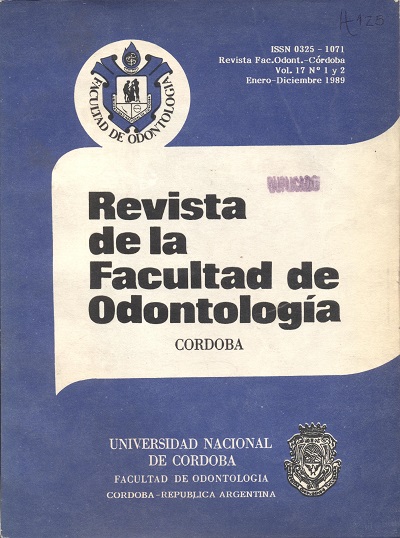Evolución morfohistoquimica del mesenquima en glándulas labiales fetales humanas
Keywords:
Fetus, Lip, Mesoderm, ImmunohistochemistryAbstract
The structural and histochemical patterns of the salivary mesenchyma were analysed in relation to the epithelium of the labial glands during the embryonic development to correlata the structural and histochemical characteristics in both tissues during the histogenesis. Samples of h~man fetal lips were analysed using H/E, PAS, Casen, Alcian blue, Tolui dine blue and Methenamine/silver, The process of glandular histogenesis begun between B te 10 weeks. The mesenchy~a surrounding the glandular buds had PAS positiva granulations which were also alcianophilic, met~chromatic and periodatoreactive. Periodatoreactive collagenous fibrillae, reticular cells and nervous fibers of considerable diameter were observad. Basement _membranas were PAS positiva, alcianophilic and di~continu.ous, At 12 weeks the mesenchyma differentiated as loase conne~tive tissue which produced a delicate periglandular capsule with fibra blast and collagenous fibrillae. Froin 20 to 2q weeks ·the ac1n1 wer-¡;;structurally and histochemically differentiated as serous, mucous and mixed, It was postulated that the periglandular mesenchyma would play and important role in the morphogenetic process in relation to the hist~chemical identification of molecules which have a specific biological functions in the epithelium-mesenchyma interactions during organogenesisDownloads
Published
2018-07-27
Issue
Section
ARTÍCULOS
License
Aquellos autores/as que tengan publicaciones con esta revista, aceptan los términos siguientes:
- Los autores/as conservarán sus derechos de autor y garantizarán a la revista el derecho de primera publicación de su obra, el cuál estará simultáneamente sujeto a la Licencia de reconocimiento de Creative Commons que permite a terceros:
- Compartir — copiar y redistribuir el material en cualquier medio o formato
- La licenciante no puede revocar estas libertades en tanto usted siga los términos de la licencia
- Los autores/as podrán adoptar otros acuerdos de licencia no exclusiva de distribución de la versión de la obra publicada (p. ej.: depositarla en un archivo telemático institucional o publicarla en un volumen monográfico) siempre que se indique la publicación inicial en esta revista.
- Se permite y recomienda a los autores/as difundir su obra a través de Internet (p. ej.: en archivos telemáticos institucionales o en su página web) después del su publicación en la revista, lo cual puede producir intercambios interesantes y aumentar las citas de la obra publicada. (Véase El efecto del acceso abierto).

